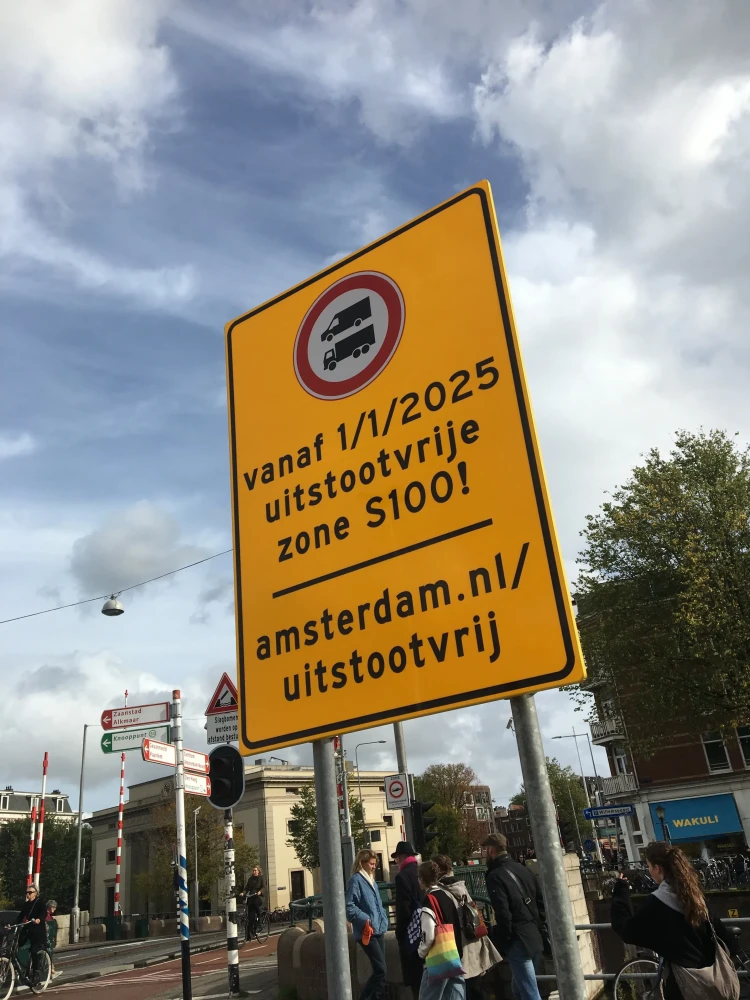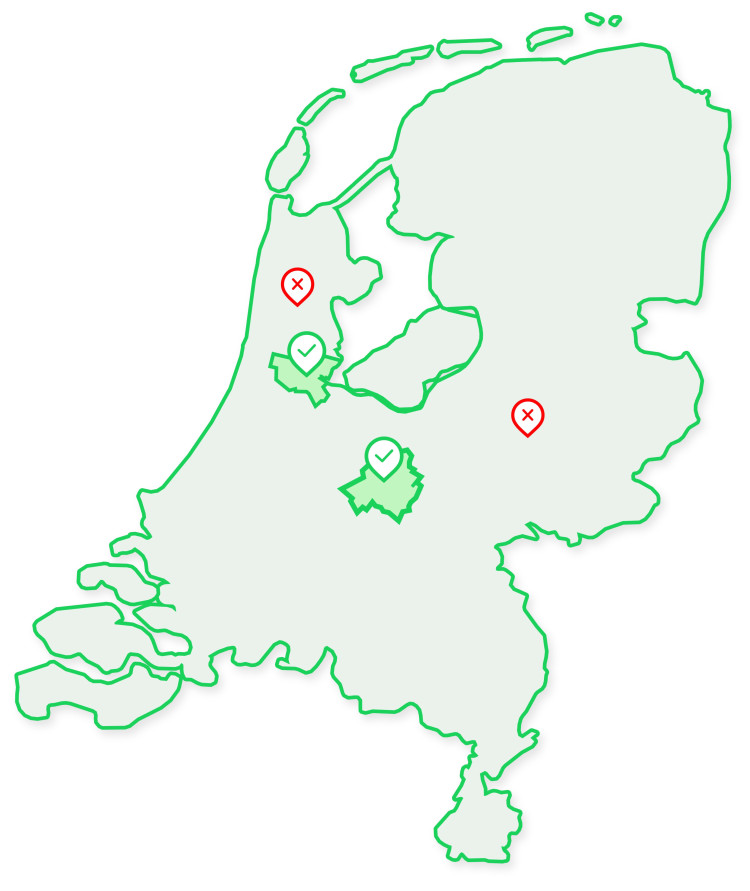The future of hydrogen vans
If we look at the current situation in terms of powering commercial vehicles, it appears that most still have a traditional internal combustion engine consuming petrol or diesel, despite the rise of electric vans. However, another option has recently emerged: the hydrogen van, powered by hydrogen.
What is a hydrogen van?
A hydrogen van is powered by an electric motor. This electric motor is powered by hydrogen fuel cells. Unlike traditional vans powered by an internal combustion engine that consumes petrol or diesel, a hydrogen van emits only water vapour as a by-product, making it a very clean and sustainable form of transport.
But didn't we already have the electric motor as an eco-friendly option? Is the hydrogen van a full-fledged alternative that should be seriously considered if you want to move away from the traditional internal combustion engine? And what exactly is the difference between the two?
The difference between a hydrogen van and an electric van
The main difference between a hydrogen van and an electric van is the way they are powered. A hydrogen delivery van uses hydrogen fuel cells to generate electricity that drives the van's electric motor, while an electric van is powered by a battery that can be charged through a plug.
The answer to which is better - electric driving or hydrogen driving - depends on several factors, including the application, availability of hydrogen and charging infrastructure, operational costs and environmental impacts. Here we list all the pros and cons of a hydrogen delivery van compared to an electric van.
The advantages of a hydrogen delivery van
Driving on hydrogen has a number of advantages over electric driving:
- Greater range. Hydrogen vans have a longer range, which makes them more attractive for applications requiring long distance travel, such as trucks or buses. After all, you don't have to refuel as often.
- Faster refuelling. Hydrogen refuelling is faster than battery recharging, which means it takes less time to refuel a hydrogen van than to recharge an electric van. This can be advantageous in situations where reaching your destination as quickly as possible is crucial.
- Heavier load capacity. Hydrogen vans have higher power than electric vans, meaning they are better suited to heavier loads and longer distances.
- Less space needed for storage. The space required for the tanks storing hydrogen is significantly less than the space needed to store batteries for electric vans.
- Longer life and less maintenance. An additional advantage is that hydrogen buses do not have batteries that need to be replaced over time. This can mean lower maintenance costs and a longer lifespan for the vehicle.
The disadvantages of a hydrogen van
Despite the above benefits, hydrogen vans also have some drawbacks when compared to electric vans.
- Better infrastructure. Electric vehicles are currently more popular than hydrogen vehicles because the charging infrastructure is already widely available. Hydrogen refuelling stations, on the other hand, are far fewer, which can make it more difficult to use hydrogen vans in some areas.
- More expensive. Hydrogen buses are currently generally more expensive than electric vans, due to the high cost of hydrogen fuel cells and the tanks needed to store hydrogen. However, the cost of hydrogen vehicles is expected to gradually decrease as the technologies are further developed
- Low energy - efficiency. Keep in mind that the energy efficiency of hydrogen is currently lower than that of batteries. This means that more hydrogen is needed for a hydrogen van to travel the same distance as an electric van with the same battery capacity.
- Larger footprint. Hydrogen production is currently still energy-intensive and requires the use of fossil fuels, making it less environmentally friendly than producing electricity from renewable sources. Added to this are the additional tanks and components needed to store and use hydrogen as a fuel. This can lead to higher maintenance and operational costs and less space for passengers or cargo.
In general, both technologies have their own advantages and disadvantages and the choice between electric or hydrogen-powered driving depends on the specific application and available infrastructure and resources. Ultimately, both technologies can contribute to more sustainable mobility and reduced emissions of greenhouse gases and air pollutants.
Replacing diesel or petrol vans with hydrogen vans?
When considering whether to replace your diesel or petrol vans with hydrogen delivery vans, there are a number of aspects to consider. Firstly, whether the advantages of hydrogen delivery vans outweigh the disadvantages. Secondly, whether it is more economical to convert your existing vehicles to hydrogen vans than to buy new vehicles and, of course, whether there are models of hydrogen vans available that meet all your requirements.
The pros and cons of hydrogen vans compared to diesel or petrol
The biggest advantage of hydrogen vans over a traditional van is that they are a lot more sustainable and environmentally friendly. And sustainability is ultimately where we are heading. This is also reflected in the various subsidies made available by European governments for sustainable projects. Furthermore, a hydrogen van has a longer range than a traditional van. The two biggest drawbacks, besides the lack of refuelling places, are consumption and cost.
Consumption
The consumption of a hydrogen van can vary depending on several factors, such as the size of the hydrogen tank, the efficiency of the fuel cell and the driving style of the driver. However, it can still be said that hydrogen vans generally have higher consumption than conventional diesel or petrol vans.
The consumption of hydrogen vans is often measured in terms of hydrogen consumption per kilometre (kg/km) or fuel consumption per kilometre (L/100km), similar to the fuel consumption of conventional vehicles. A typical hydrogen delivery van can consume between 2 and 4 kilograms of hydrogen per 100 kilometres, equivalent to 20 to 40 litres of petrol equivalent per 100 kilometres.
The cost
Hydrogen is currently more expensive than petrol or diesel on a mileage basis. The production and distribution of hydrogen is currently still more expensive than the production and distribution of petrol or diesel, resulting in higher fuel costs for hydrogen vans. In general, the cost for a kilogram of hydrogen (equivalent to about 1 litre of petrol equivalent) is between €10 and €15, but this can vary depending on the country and region. For a hydrogen vehicle with a hydrogen tank capacity of, say, 5 kg, a full tank can cost between €50 and €75.
However, the price of hydrogen varies greatly by region and country and can depend on several factors. These include the cost of electrolysis to produce hydrogen, the price of renewable energy sources, the cost of transport and storage and the level of government support.
In full development
One thing you should definitely take into account: the hydrogen hydrogen van is still in its infancy. However, despite the higher fuel costs, hydrogen can offer advantages over petrol or diesel, such as greater range and more environmentally friendly propulsion. Moreover, the efficiency of hydrogen vans can be improved by technological advances and improvements in the hydrogen production process. As a result, it may not be a viable option at the moment, but could just become a very suitable alternative in the short term.
Can you convert an internal combustion engine van to hydrogen?
It is possible to convert a diesel vehicle to a hydrogen van, but this is a complex and costly process. To convert a diesel vehicle to a hydrogen van, the internal combustion engine and fuel tank must be removed and replaced with a hydrogen fuel cell and tanks to store the hydrogen.
Many modifications
Adaptations must also be made to the vehicle's powertrain and other systems to work with the new hydrogen propulsion system. Blue World Technologies produces a hydrogen fuel cell that can be installed in existing van models to convert them into hydrogen vans. Currently, converting a diesel vehicle to a hydrogen van is still a relatively new and unusual process.
High costs
The cost of converting an existing diesel van to a hydrogen van is currently very high. In addition, it can be difficult to find the required parts and expertise to carry out the work. Therefore, it is generally more practical to purchase a hydrogen van directly rather than converting a diesel van.
What hydrogen vans are available?
As just described, converting internal combustion engine vehicles to hydrogen-powered vehicles turns out to be quite complex. The best choice then is to purchase a hydrogen delivery van. Is there enough choice of hydrogen vans? At the moment, supply is still relatively limited, but many brands are developing in full force. This is partly due to subsidies aimed at promoting the energy transition.
Not all car brands are equally positive about hydrogen cars. A good example is Volkswagen, which still remains committed to electric vehicles. Yet others are aware of the great advantages hydrogen vans bring to long-distance transport. The space and weight of the batteries make electric vans less suitable for business purposes. After all, it saves a lot of time when there is no need to recharge the battery like an electric car and the range is longer.
Citroën, Peugeot, Opel and Fiat
Stellantis, with Citroën, Peugeot, Fiat and Opel, has launched a number of hydrogen vans, such as the Citroën e- Jumpy and Berlingo Hydrogen, the Fiat Ducato Hydrogen and the Peugeot Boxer Hydrogen, all with a range of around 400 km. Then there is also the Opel Vivaro-e Hydrogen. This is a hydrogen delivery van with a range of around 350 km.
Of their best-selling models, they have made so-called plug-ins. In fact, besides the hydrogen tanks, the battery can also be charged from a plug-in. Depending on the action and speed (low speed or constant speed, starting up, overtaking, etc.), the electric motor is powered by the battery or by the fuel cell. Both can even be combined.
Renault
Besides Stellantis' medium-to-large cars, there is also a larger model: the Renault Master ZE H2. This is an electric van powered by a combination of a battery and a hydrogen fuel cell. The vehicle has a range of about 350 km. Other models from Renault include the Renault Kangoo ZE H2, also with a combined powertrain, and the Renault EZ-Pro: a concept autonomous van available as a hydrogen variant with a range of about 100 km on hydrogen.
Hyundai and Iveco
Hyundai and Iveco jointly presented the eDaily FCEV, with a range of 350 km and a maximum capacity of 3 tonnes of cargo that can be transported. The Hyundai H350 is also a spacious van, which is also powered by hydrogen. The vehicle has a range of more than 400 km. The Iveco Daily Blue Power H2 is a hydrogen van currently being tested in several European cities. The vehicle has a range of about 200 km.
Other brands
Other brands are also busy experimenting with hydrogen vans. For example, Mercedes Benz, MAN TGE, Nissan or Toyota. More and more models, which were previously only available in France or Germany, will also be available on the Dutch market within now and a year. Think of the Citroën e-Jumpy Hydrogen, the Opel Vivaro-e Hydrogen and the Peugeot e-Expert Hydrogen.
In short, the hydrogen van looks set to become a good sustainable alternative to traditional fuel engine vehicles in long-distance transport, provided that new developments ensure more environmentally friendly hydrogen production, affordable supply and sufficient hydrogen refuelling stations.



